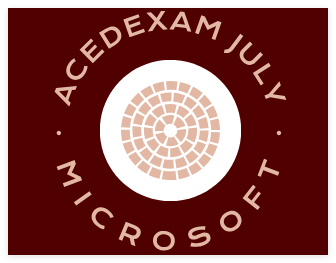Categories
Archives
- July 2024
- June 2024
- May 2024
- March 2024
- January 2024
- December 2023
- October 2023
- September 2023
- August 2023
- July 2023
- May 2023
- April 2023
- January 2023
- December 2022
- October 2022
- September 2022
- July 2022
- June 2022
- April 2022
- March 2022
- December 2021
- November 2021
- September 2021
- July 2021
- May 2021
- March 2021
- January 2021
Category: Microsoft Certification Exam
Extract, Transform, and Load (ETL) – Core Data Concepts
Extract, Transform, and Load (ETL) ETL pipelines process data in a linear fashion with a different step for each phase. They first collect data from different sources, transform the data to remove dirty data and conform to business rules, and load the processed data into a destination data store. This approach has been used in …
Extract, Transform, and Load (ETL) – Core Data ConceptsRead More
Deploying through the Azure Portal – Relational Databases in Azure
Deploying through the Azure Portal Deploying services in Azure can be done manually on the Azure Portal or automated using a scripting language (e.g., PowerShell or Bash) or an Infrastructure as Code template. SQL Server on Azure VMs are no different than any other service in this aspect, providing users multiple options for managing the …
Deploying through the Azure Portal – Relational Databases in AzureRead More
Azure SQL Managed Instance – Relational Databases in Azure
Azure SQL Managed Instance Migrating SQL Server workloads to Azure can provide more benefits than simply offloading hardware management. Organizations can also take advantage of PaaS benefits that remove the overhead of managing a virtual machine, such as the OS and the SQL Server instance from users. However, applications that require instance-scoped features will still …
Azure SQL Managed Instance – Relational Databases in AzureRead More
Service Tiers – Relational Databases in Azure
Service Tiers There are two service tiers available for Azure SQL MI: Table 2.3 outlines some of the key differences between the two tiers. The descriptions listed are for the Gen5 hardware version of Azure SQL MI. TABLE 2.3 Azure SQL MI service tier characteristics Feature General Purpose Business Critical Number of vCores 4, 8, …
Network Isolation – Relational Databases in Azure
Network Isolation An Azure SQL MI is required to be placed inside a VNet upon creation. On top of this requirement, the subnet that the Azure SQL MI is deployed to must be dedicated to hosting one or more Azure SQL MIs. This requirement restricts access to databases hosted on the Azure SQL MI to …
Load – Core Data Concepts
Load The last phase of an ETL process involves loading the transformed data to a destination data model. This data model can be a data warehouse such as Azure Synapse Analytics or Azure SQL Database, a database such as Azure Cosmos DB that serves highly distributed web applications, or an object store such as ADLS …
Control Flows and Data Flows – Core Data Concepts
Control Flows and Data Flows Many ETL tools employ two methods for orchestrating data pipelines. Tasks that ensure the orderly processing of data processing activities are known as control flows. Data processing activities are referred to as data flows and can be executed in sequence from a control flow. Data engineers that use ADF to …
Transform – Core Data Concepts
Transform The second phase of an ETL process involves transforming the extracted data that is cleansed and meets a set of business requirements. Data is scrubbed of dirty data and prepared so that it fits the schema of the destination data model. Transformations are split into multiple activities for optimal data pipeline performance. This modular …
Extract, Load, and Transform (ELT) – Core Data Concepts
Extract, Load, and Transform (ELT) ELT workflows differ from ETL workflows solely in where the data transformation takes place. Instead of a separate transformation engine, the destination data store is used to load and transform data. This simplifies the design by removing extraneous components that would typically be used to transform data. Since the transformation …
Extract, Load, and Transform (ELT) – Core Data ConceptsRead More
Load and Transform – Core Data Concepts
Load and Transform The key to any ELT workflow is the destination data store’s ability to process data without needing to store it in-engine. MPP technologies do this by fitting a schema over one or more files that are stored in ADLS or Azure Blob Storage. The destination data store only manages the schema of …

